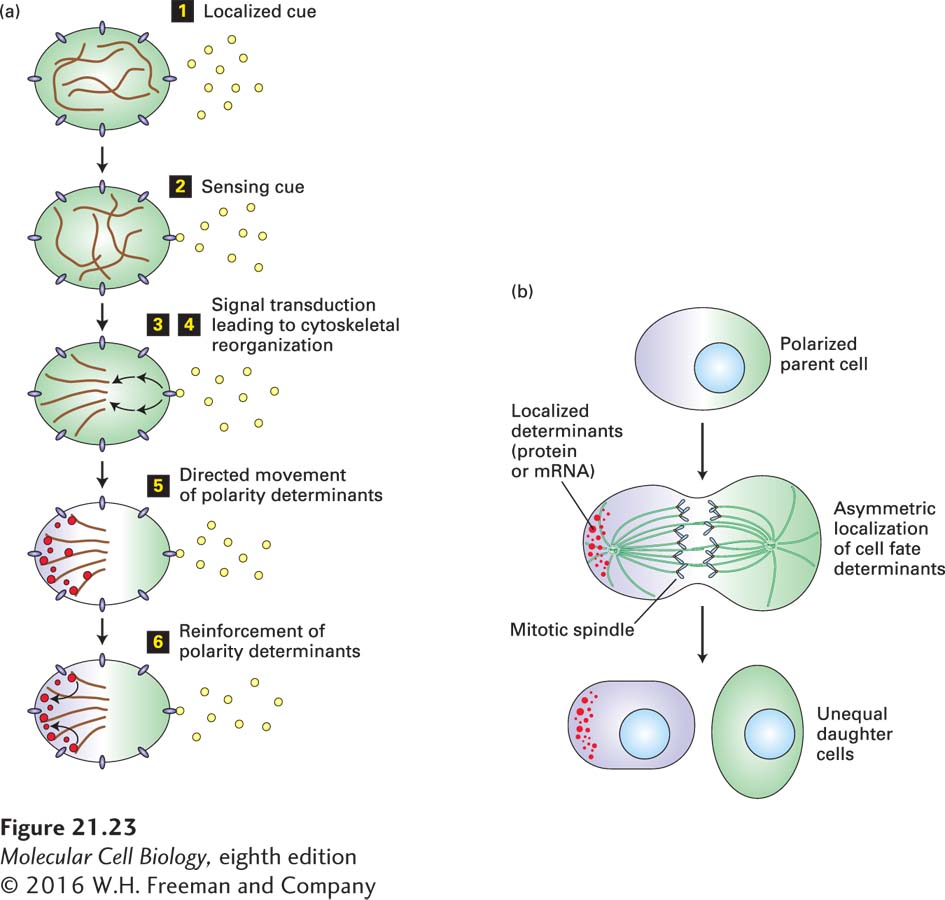
FIGURE 21- 23 General features of cell polarity and asymmetric cell division. (a) General hierarchy of the steps in generating a polarized cell. To know in which orientation to polarize, cells must be exposed to a spatial cue (step 1). They must also have receptors or other mechanisms to sense the cue (step 2). Once a cell senses the cue, signal transduction pathways (step 3) regulate the cytoskeleton (microtubules and/or microfilaments, depending on the system) to reorganize it in the appropriate polarized manner (step 4). The polarized cytoskeleton provides the framework for the transport of membrane- trafficking organelles and macromolecular complexes, including fate and polarity determinants, in the cell (step 5). In many cases, the polarity is reinforced by the return of polarity determinants that have moved away from the site of concentration. In cases in which the determinants are membrane proteins, this reinforcement cycle may involve uptake by endocytosis and delivery to the site of concentration (step 6). (b) Cell polarity requires specific determinants, including mRNAs, proteins, and lipids, to be asymmetrically localized in a cell. If the mitotic spindle is positioned so that these determinants are segregated during cell division, the two daughter cells will have different cell fate determinants. However, if the mitotic spindle is not oriented appropriately, the determinants will not be segregated properly, and the daughter cells could have the same fate (not shown).
[Leave] [Close]